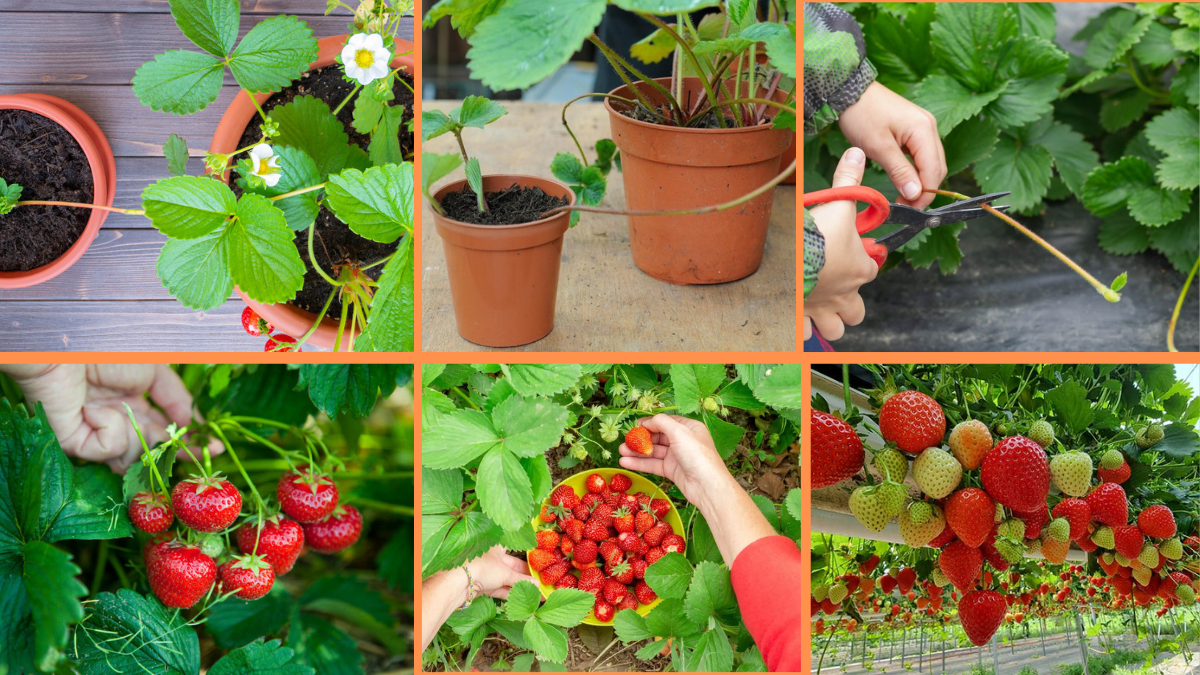There’s something undeniably special about plucking a sun-warmed, juicy strawberry right from your own garden. These sweet, ruby-red gems are not only a delicious treat but also surprisingly easy to grow — whether you have a sprawling backyard, a cozy patio, or even just a sunny windowsill.
If you’ve ever wondered how to start growing strawberries at home, you’re in the right place. In this comprehensive guide, we’ll walk you through everything you need to know: from selecting the right variety and planting methods to care tips, harvesting, and common mistakes to avoid.
Let’s dive in and get your strawberry patch started!
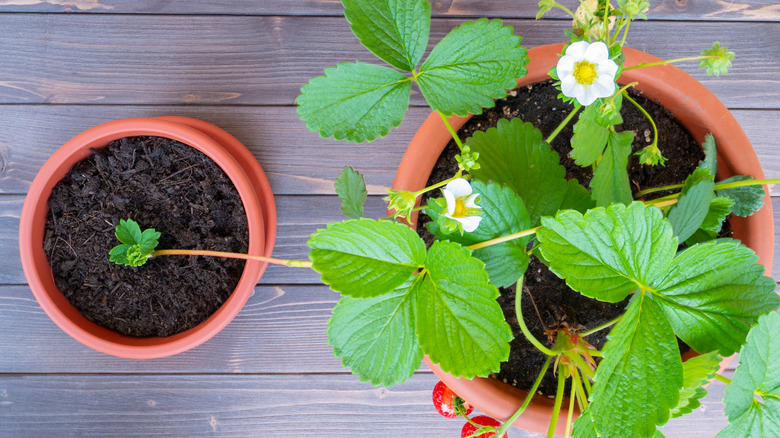
Why Grow Strawberries?
Strawberries are one of the most popular fruits for home gardeners, and it’s easy to see why:
- Fast-growing and productive — you can harvest within the first year
- Delicious, sweet flavor unmatched by store-bought varieties
- Rich in vitamin C, fiber, and antioxidants
- Adaptable to containers, hanging baskets, or garden beds
- Beautiful white flowers and attractive foliage
- Ideal for small-space and balcony gardening
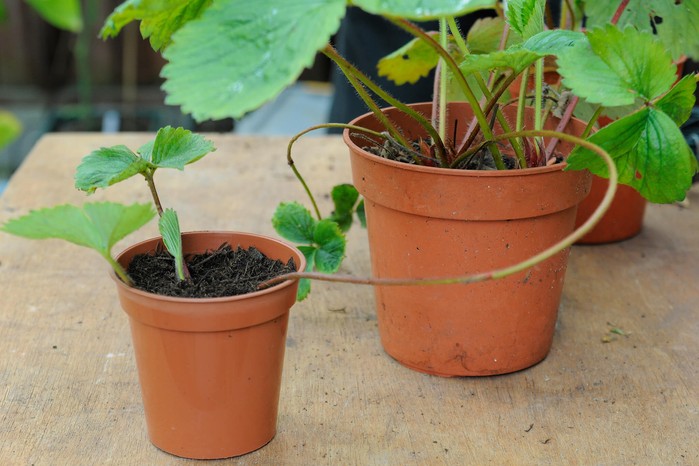
When to Plant Strawberries
The best time to plant strawberries depends on your location and climate:
- In mild climates: Late fall to early spring (October to March)
- In colder regions: Early spring, as soon as the ground is workable (March to April)
- In hot, tropical areas: During the cooler months for best growth
Pro tip: Strawberry plants are perennials, meaning they can produce fruit for several years if properly cared for.

Choosing the Right Strawberry Variety
There are three main types of strawberries, each with unique growing and fruiting habits:
1. June-bearing:
- Produce one large harvest in late spring to early summer.
- Largest, juiciest fruits.
- Great for jam, desserts, and freezing.
2. Everbearing:
- Produce two to three smaller harvests: in spring, summer, and fall.
- Ideal for continuous snacking.
3. Day-neutral:
- Produce fruit steadily throughout the growing season.
- Perfect for container gardens and balconies.
Popular varieties:
- ‘Seascape’ (Day-neutral)
- ‘Albion’ (Day-neutral)
- ‘Chandler’ (June-bearing)
- ‘Quinault’ (Everbearing)
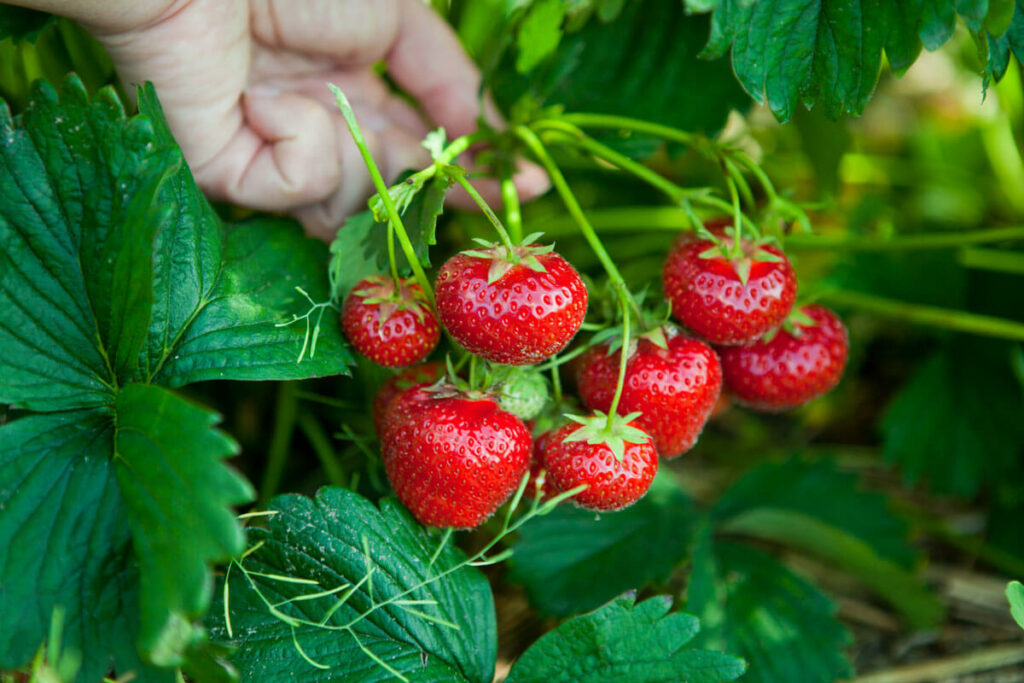
What You’ll Need
Before you begin planting, gather these supplies:
- Strawberry plants or bare-root crowns
- Well-draining, nutrient-rich soil or compost
- Raised bed, hanging basket, garden bed, or pots with drainage holes
- Organic mulch (like straw or pine needles)
- Fertilizer (balanced or high-phosphorus)
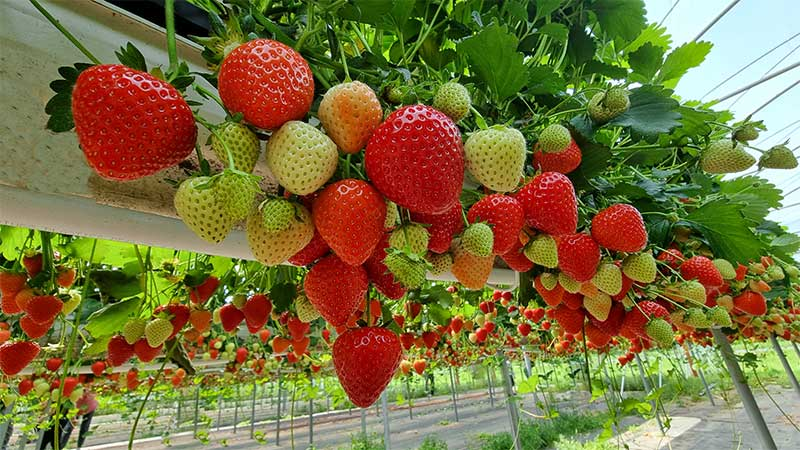
How to Plant Strawberries
Strawberries can be planted in the ground, raised beds, or containers. Follow these steps for healthy, productive plants:
1. Prepare the Planting Site
Strawberries love full sun — at least 6–8 hours of direct sunlight daily. Choose a well-draining spot to prevent waterlogged roots.
Soil Requirements:
- Light, loamy soil rich in organic matter
- pH between 5.5 and 6.8
- Mix in compost or aged manure before planting
2. Plant Bare-Root Crowns or Seedlings
For bare-root plants:
- Soak roots in water for 30 minutes before planting.
- Dig a small hole, spread out the roots, and position the crown at soil level (not buried).
For potted seedlings:
- Gently remove the plant from its container.
- Loosen the roots and plant it at the same depth it was growing in the pot.
Spacing:
- 12–18 inches apart in rows 2 feet apart
- For containers: 3–5 plants per large container
3. Water Thoroughly
After planting, water generously to settle the soil around the roots. Keep the soil consistently moist but not waterlogged.
4. Mulch to Retain Moisture
Apply a 2–3 inch layer of organic mulch (like straw or pine needles) around the plants to:
- Retain soil moisture
- Keep fruits clean
- Suppress weeds
- Protect roots from temperature swings
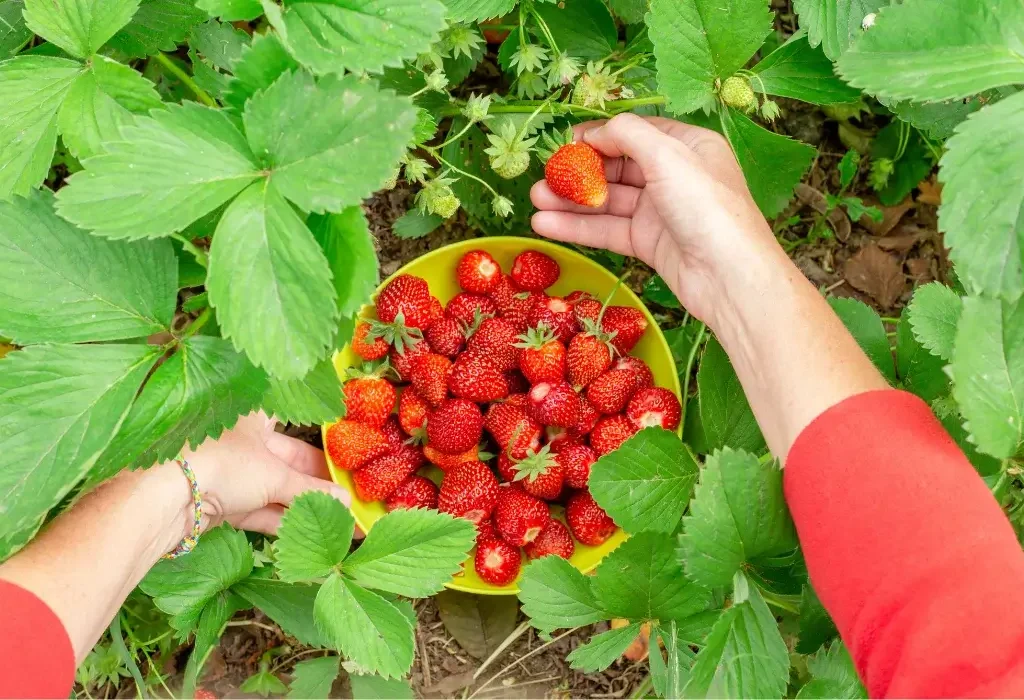
Strawberry Plant Care Tips
Once your strawberries are planted, follow these essential care practices to keep them healthy and productive.
Light:
- Full sun for at least 6–8 hours daily.
Water:
- Keep soil consistently moist, especially during fruiting.
- Avoid overhead watering to prevent disease.
Fertilizing:
- Apply a balanced fertilizer or compost when planting.
- Feed with a high-potassium fertilizer (like tomato feed) during flowering and fruiting.
Pruning:
- Remove runners (long stems that produce new plants) in the first year to focus energy on fruit production.
- Trim dead or damaged leaves regularly.
Growing Strawberries in Containers
Strawberries are perfect for container gardening — ideal for balconies, patios, or small backyards.
Container requirements:
- At least 8–12 inches deep
- Good drainage holes
- Lightweight, nutrient-rich potting mix
Pro tip: Try hanging baskets or strawberry towers for vertical growing and easy harvesting.
How to Propagate Strawberry Plants
Strawberries produce runners (stolons) that form baby plants. In the second year:
- Let a few runners root in the soil.
- Cut them from the mother plant once established.
- Transplant to a new spot or container.
Harvesting Strawberries
Fresh, homegrown strawberries taste better than any store-bought kind. Here’s how to harvest them properly:
- Pick fruits when they are fully red, firm, and fragrant.
- Harvest in the morning when fruits are cool.
- Hold the stem just above the fruit and gently pull with a twisting motion.
Pro tip: Harvest daily during peak season to enjoy the freshest berries and encourage more fruit production.
Common Strawberry Pests & Problems
Keep an eye out for these common issues:
Pests:
- Slugs and snails
- Aphids
- Spider mites
Solutions:
- Handpick pests.
- Use organic insecticidal soap.
- Surround plants with diatomaceous earth or crushed eggshells to deter slugs.
Diseases:
- Powdery mildew
- Gray mold (Botrytis)
- Root rot
Prevention:
- Ensure good air circulation.
- Avoid overhead watering.
- Use disease-resistant varieties.
- Mulch to keep fruits off damp soil.
How to Overwinter Strawberries
In colder regions, strawberries need winter protection:
- Cut plants back to 1 inch tall after the first frost.
- Cover with a thick layer of straw or mulch.
- Remove mulch in early spring when new growth appears.
In warm climates, strawberries may remain evergreen year-round.
Final Thoughts
Growing your own strawberries is a delightful, rewarding experience — one that brings flavor, beauty, and charm to your home garden. With just a little care and attention, you’ll be rewarded with fresh, sun-kissed berries for snacking, baking, or preserving.
Whether you’re planting in a garden bed, raised container, or hanging basket, strawberries are adaptable and easy to manage, making them perfect for beginners and seasoned gardeners alike.
So why not start today? Your future self — and your taste buds — will thank you!
